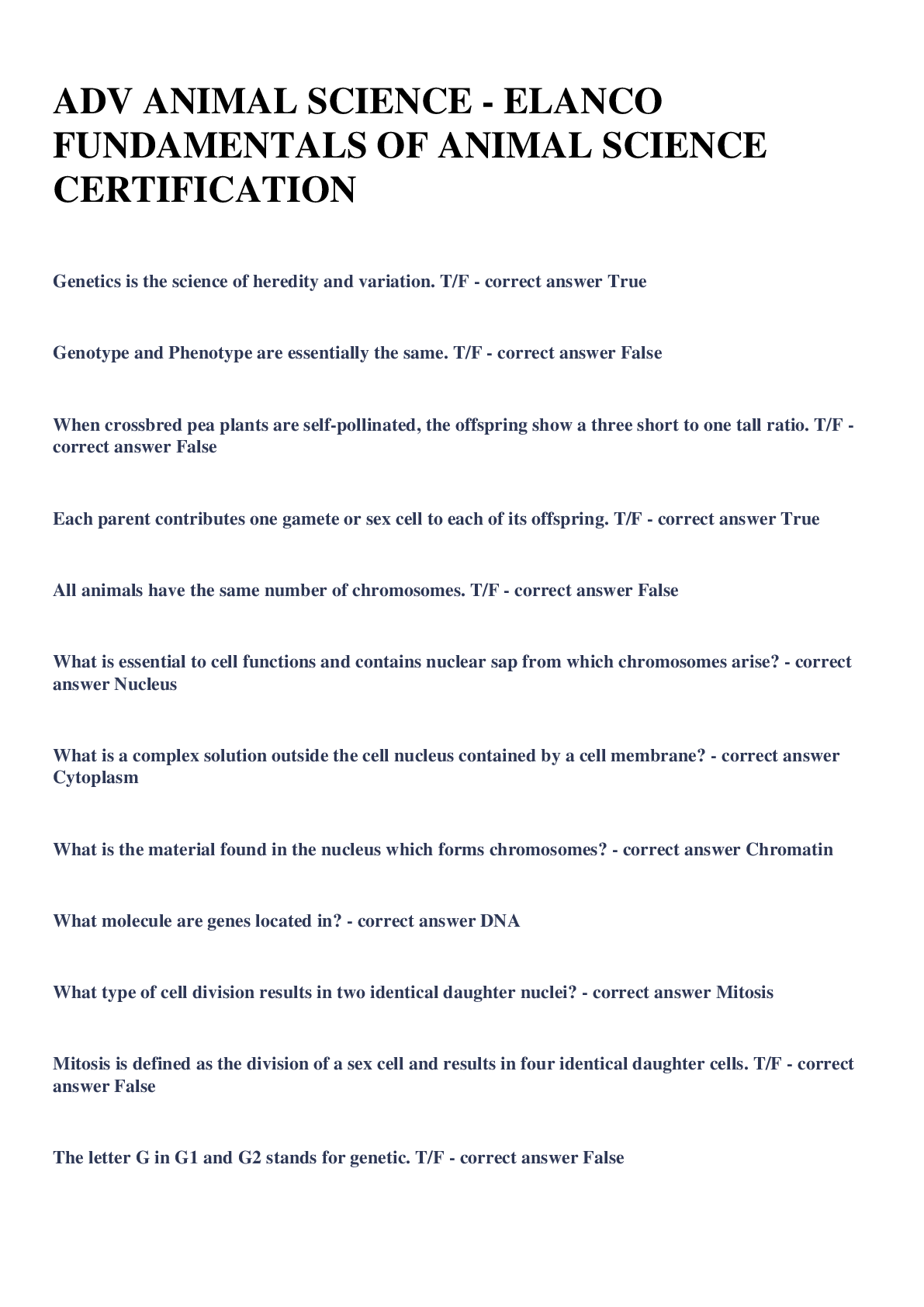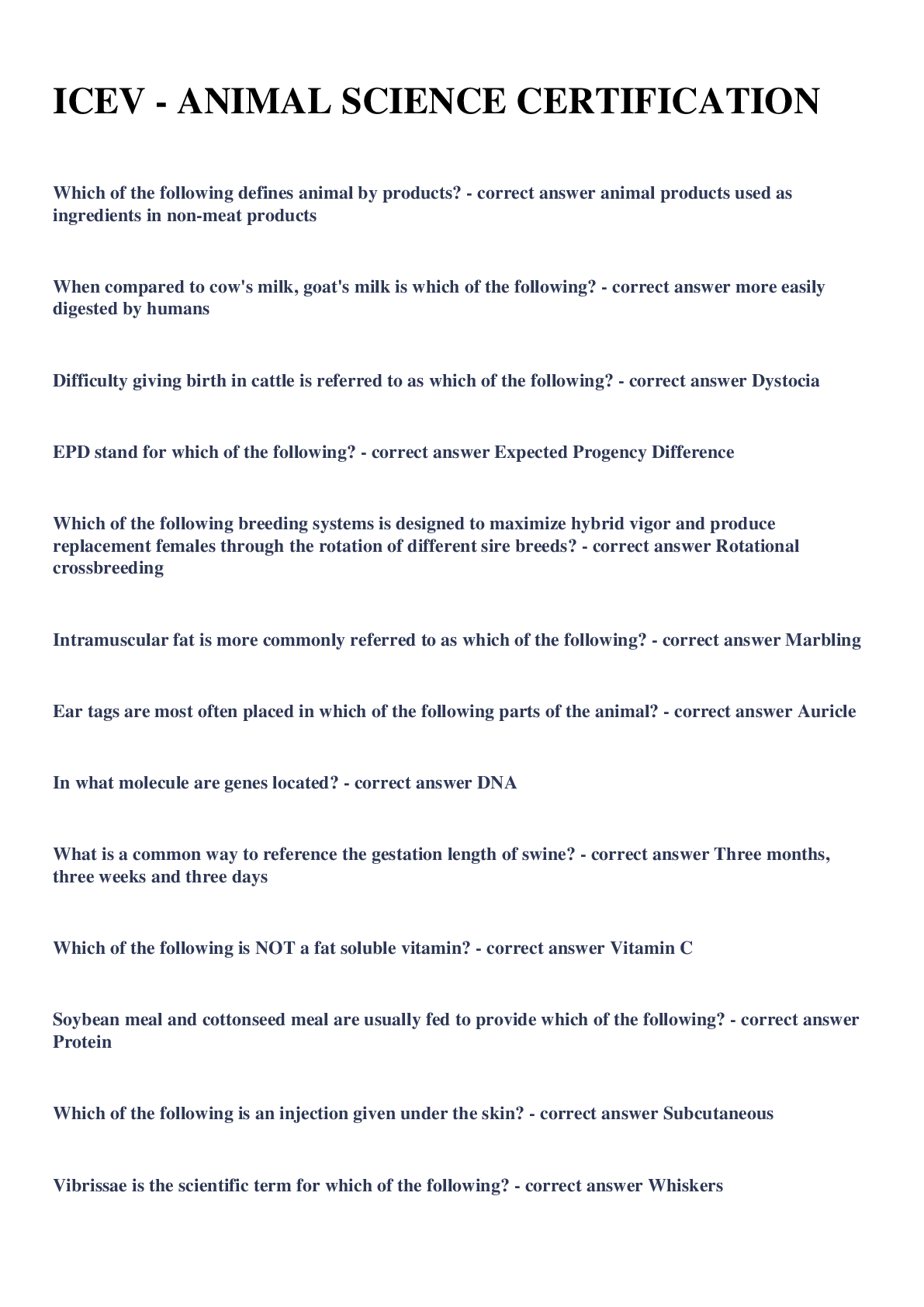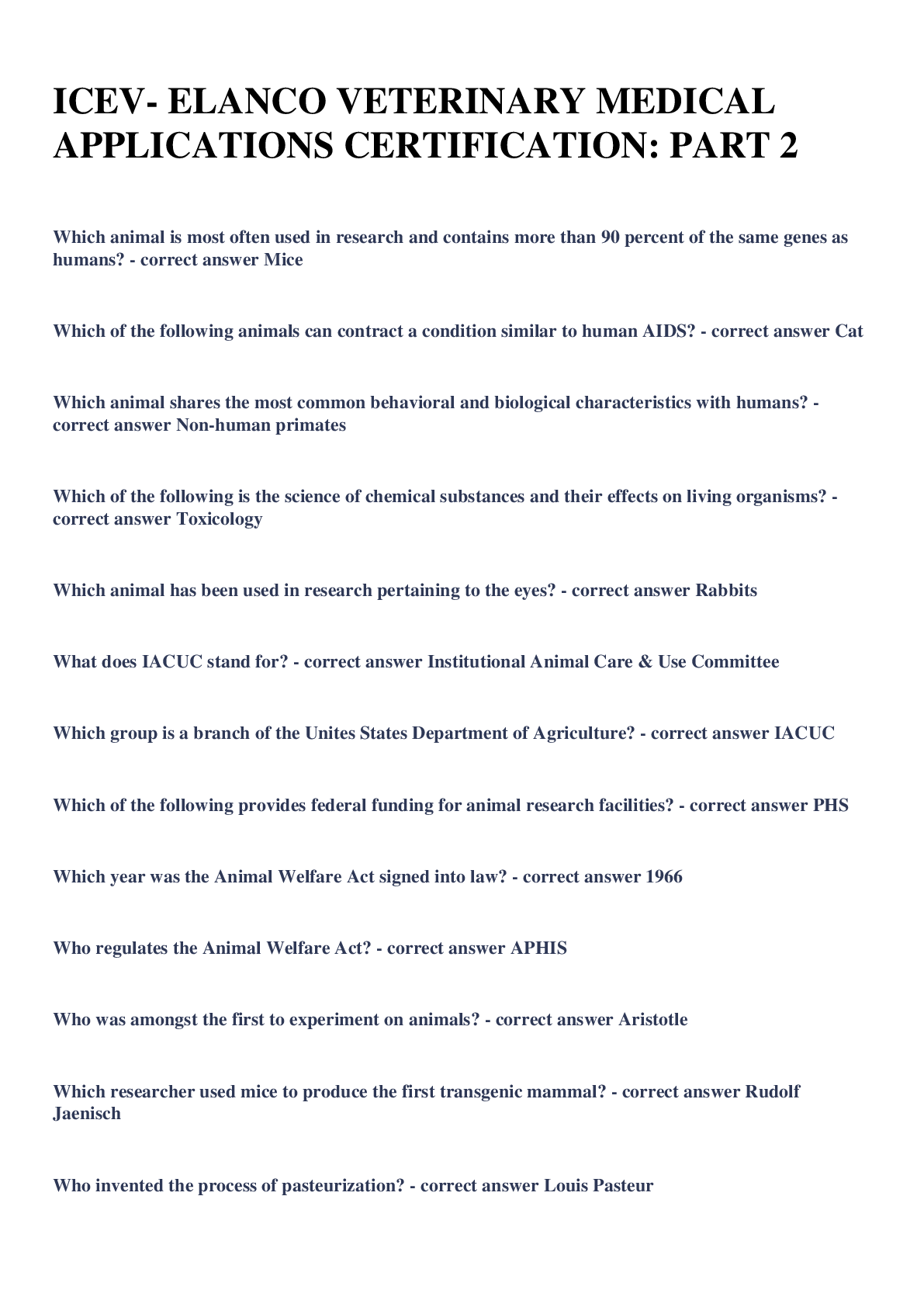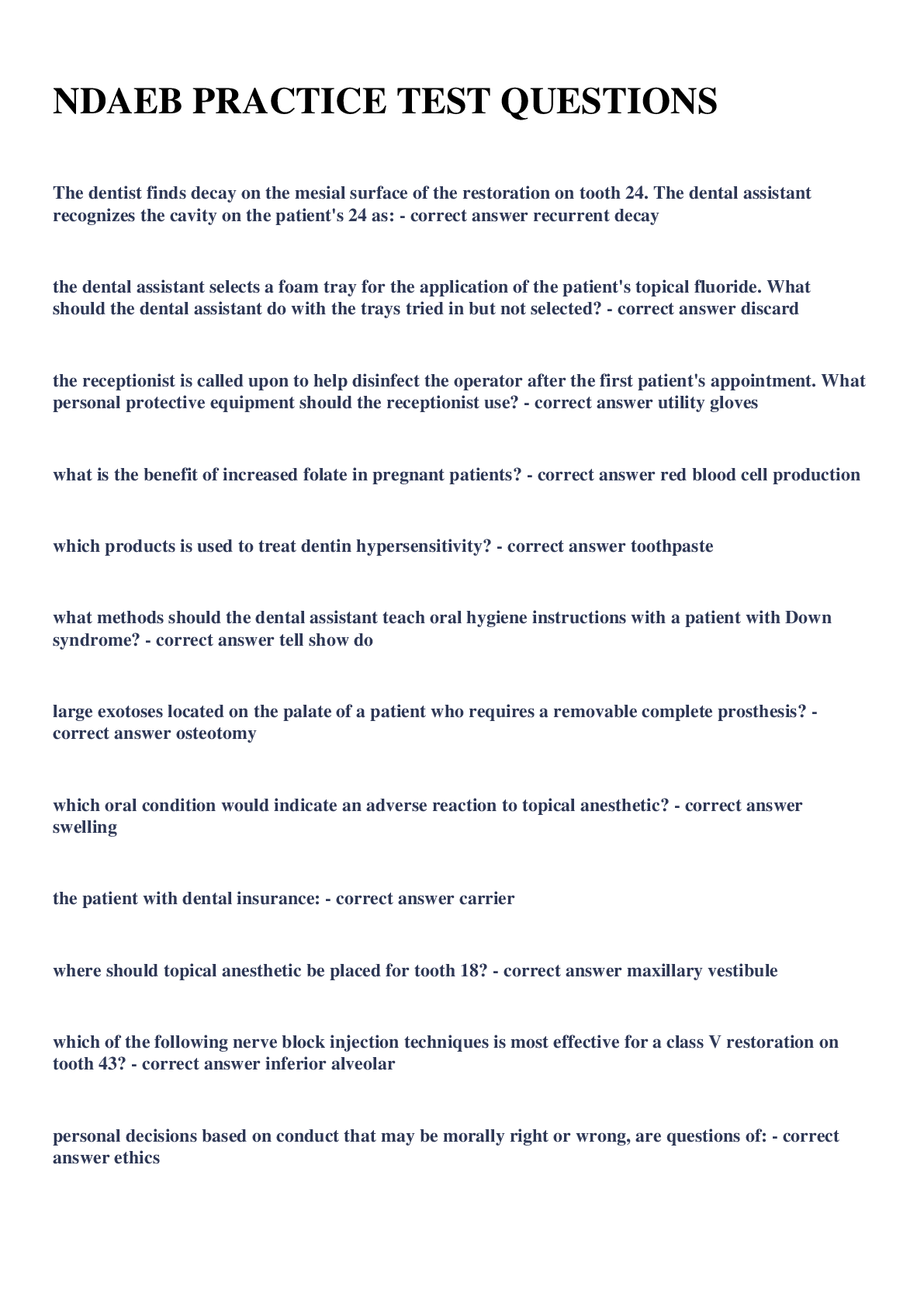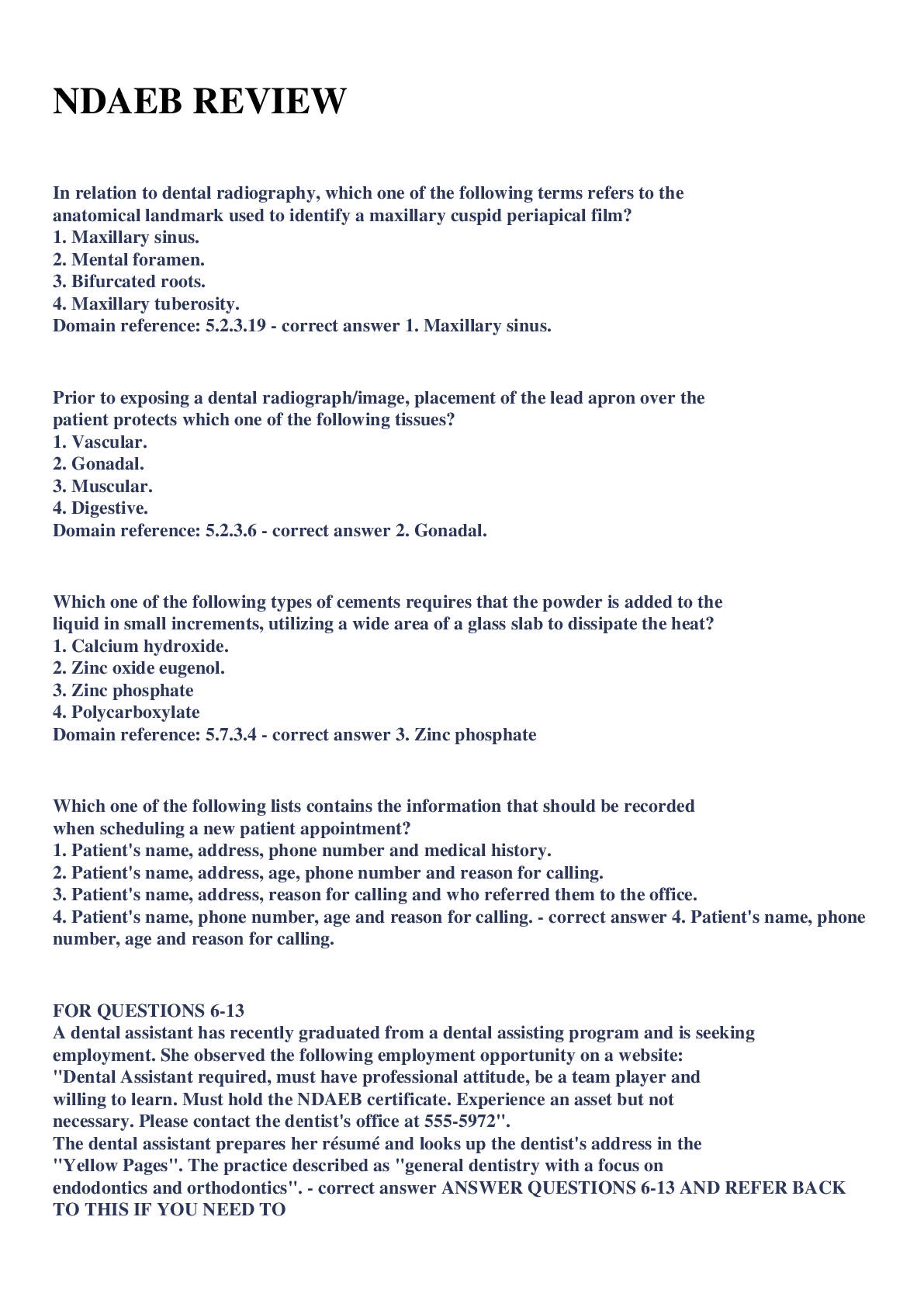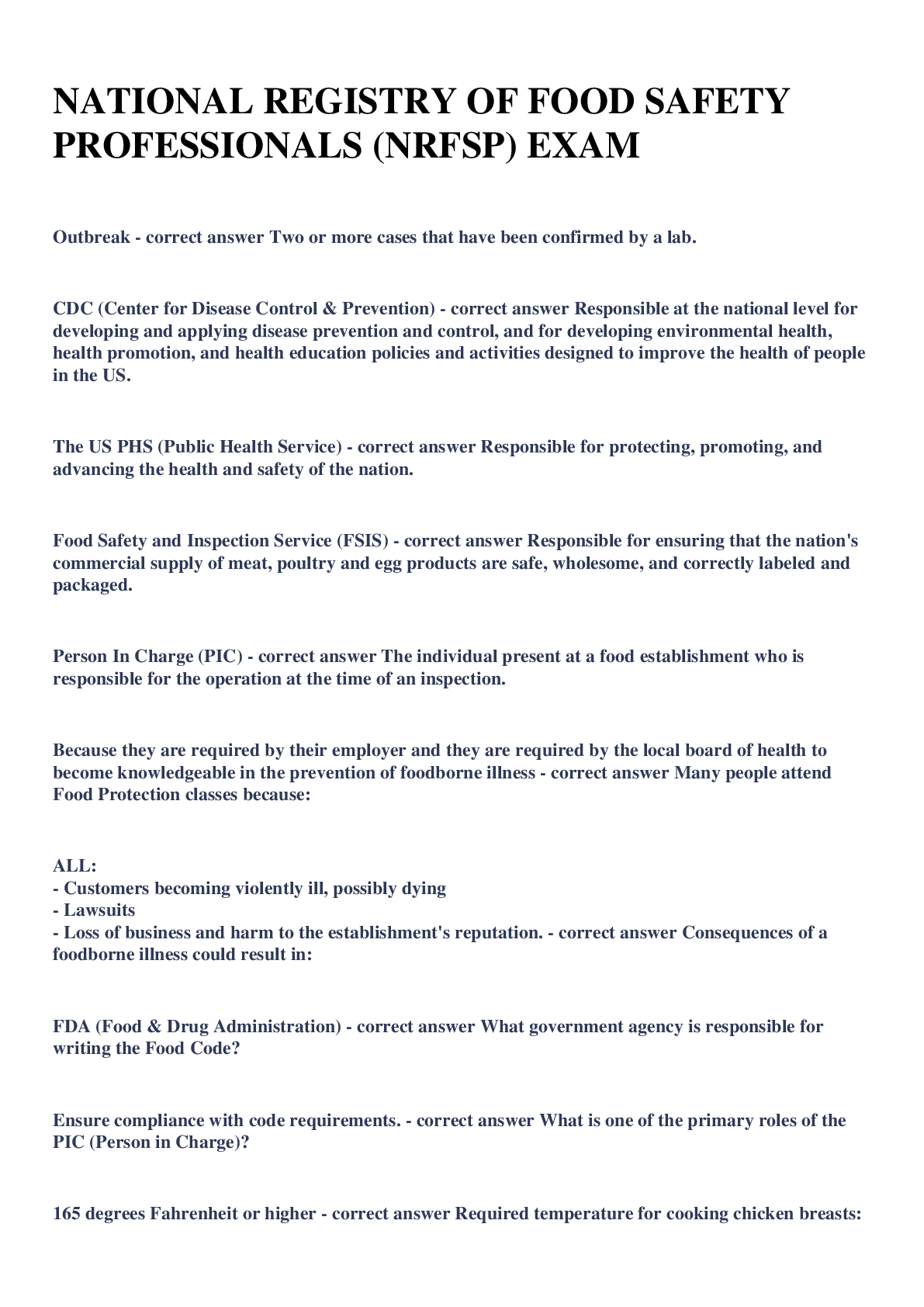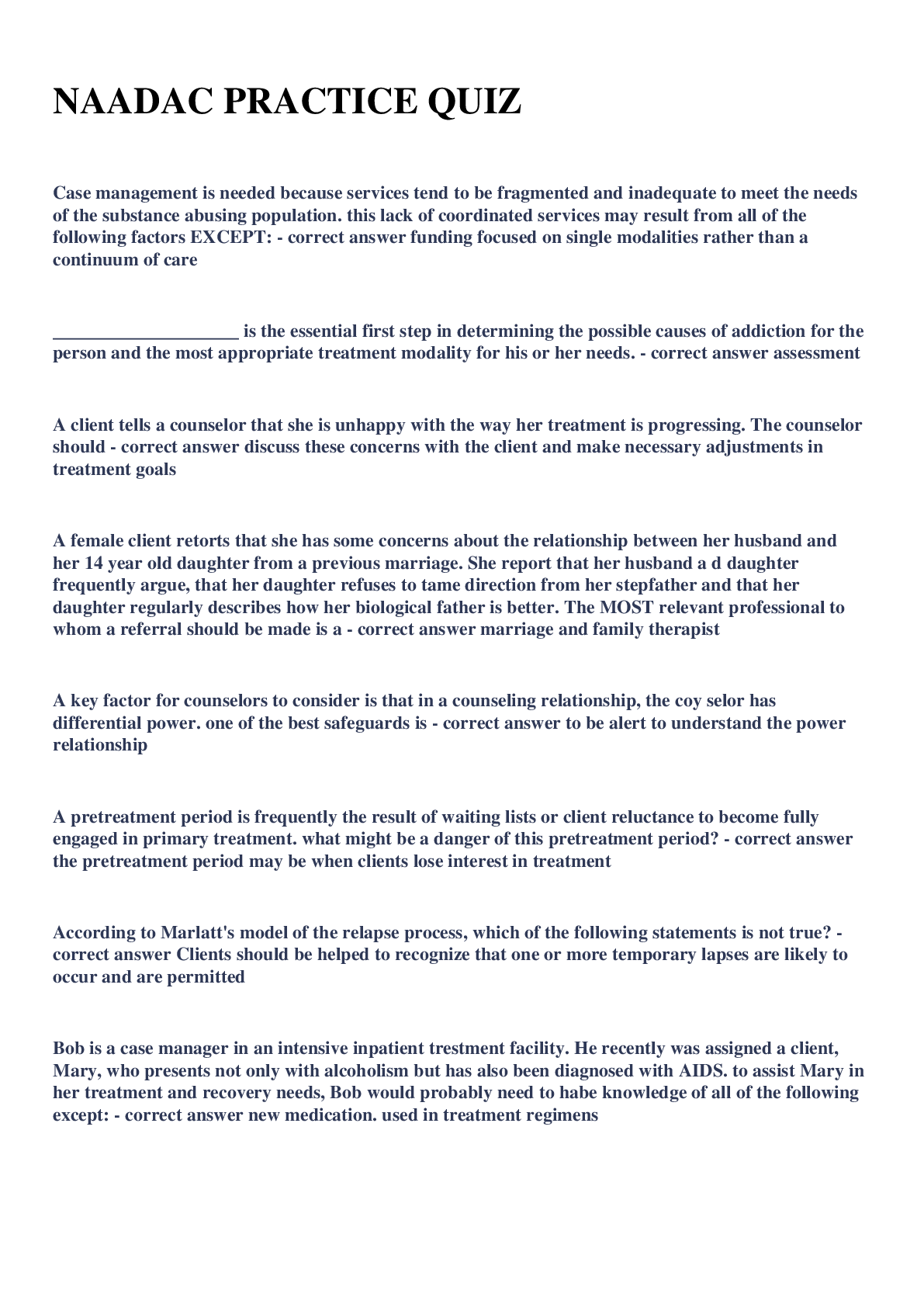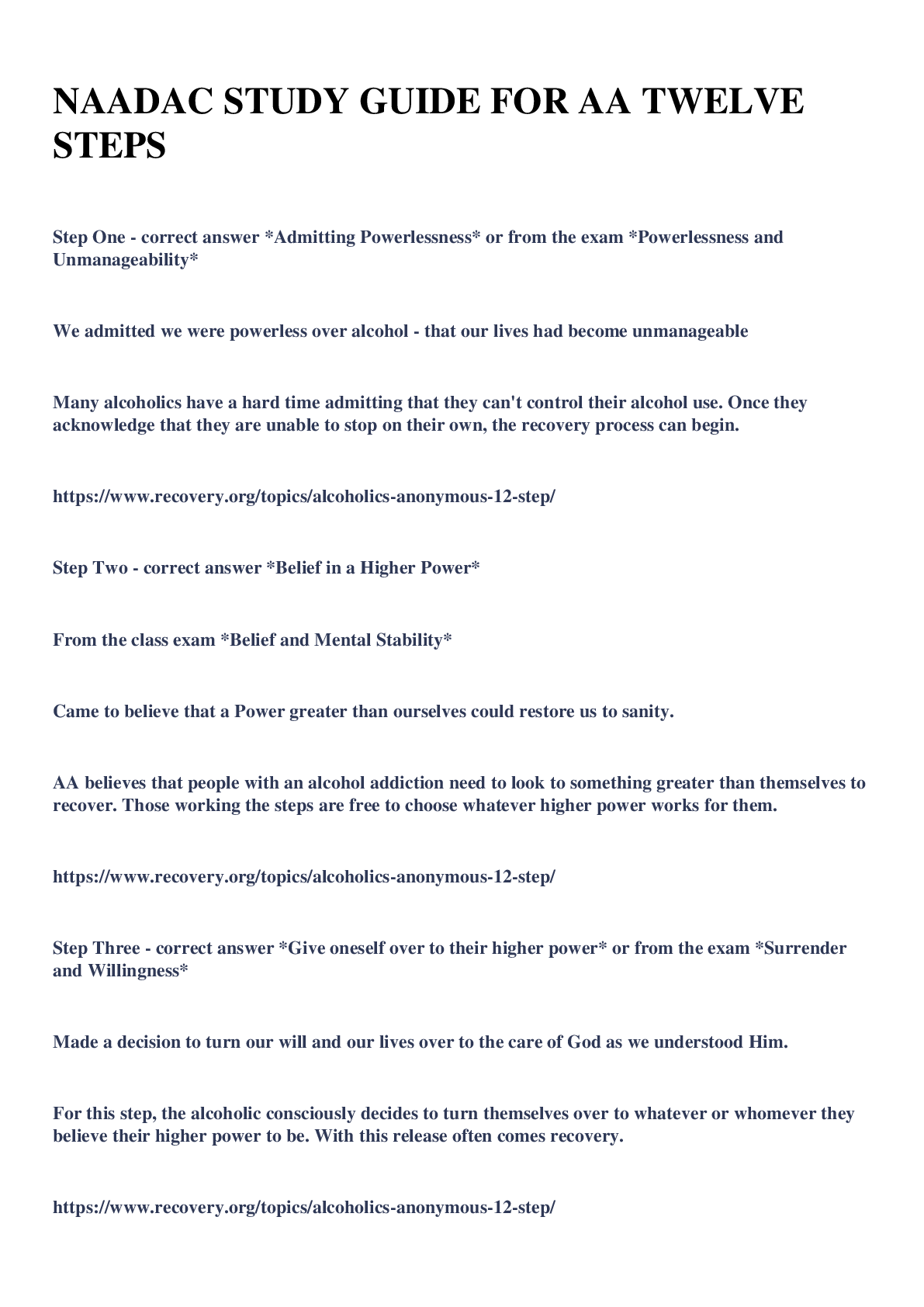*NURSING > A-Level Mark Scheme > NAADAC MODULE 2 THEORIES 2023 LATEST UPDATE (All)
NAADAC MODULE 2 THEORIES 2023 LATEST UPDATE
Document Content and Description Below
Behavioral Modification Theroy Based on the idea that all behavior is learned and what is learned can be unlearned. Classical Conditioning, Operant Conditioning and Modeling Gestalt Therapy P... eople must accept responsibility for what happens to them and find their own way in life. Family systems and addiction counseling Based on the premise that when a person abuses drugs the whole family is affected. Structural family therapy The counselor tries to change the dysfunctional structure of the family Pharmacotherapies in treatment of substance abuse Using prescriptions drugs along with some form of therapy to treat substance abuse. Adolescent egocentrism Self centeredness based on the concerns of what others think Rational Emotive Behavioral Theory Belief that it is not an actual event disturbs a person and how he sees that event. Medical malpractice and negligence Involves a law suit and the other is breach of duty of care. NAADAC regarding addiction of alcohol to the national drug control strategy Should be addressed by the National Drug Control Strategy because it is a drug even though it is legal Self referral process Provides help for the professional to get help for addictive behavior. Professional ethical decision making What is the decision based on? Will anyone be hurt by my decision, is it base on what I believe personally or, professional codes of ethics Human Central Nervous System Brain & Spinal Cord, and the automatic nervous system which checks all body functions to make sure it is functioning properly. The dependent delusional system Is the way a person protects the inner person from the realization of his dependency on drugs. Memory recall, Blackout, Euphoric Recall, Denial, Rationalization, Blaming and Intellectualizing. Stages of withdrawal from CNS depressants The shakes 90% of the time, Hallucinations 25%, Seizures 7 to 48 hours after last drink, Delirium Tremens 3 to 5 days after last drink. Psychological or behavioral dependence A person taking a chemical to satisfy a feeling or an emotional need. Psychoactive chemical addicts use drugs to get pleasurable and desirable psychological effects. DSM-5 Defines substance use disorder Caused by abusing a drug, by medication side effect or by exposure to a toxin. It will vary depending on the type of substances being used. 2 or more drugs used at anytime during the past 12 months for a diagnosis of substance abuse disorder. Physiological dependence Has to do with the body's adaptation to the presence of a chemical. When the chemical is not present the body acts in a negative manner, called withdrawal. Recreational drug use Chemical use in a social setting with a group of friends who are using drugs. Circumstantial drug use For a specific reason, such as using to stay awake or to be active. Compulsive drug use Using on the daily basis and using in large amounts to get the desired effect. Intensified drug use Using everyday but in low amounts to help alleviate some problems or to boost levels of performance. Schedules one Drugs (I) Chemicals that have no medical use and a high abuse liability Schedule Two drugs (II) Contain chemicals that are valuable for their medical use but can only be prescribed by a doctor. Schedule Five Drugs (V) Contains the least abuse liability Methamphetamines Are chemically made stimulants. It is related to amphetamines but the effect are much greater. Made in illegal home labs. Short term effects of alcohol Feeling of euphoria, drowsiness, dizziness and flushing complexion: vision and speech imbalance. Long term effects of Talwin and Ritalin use Toxic psychosis, Delusions and confusion. Inhalants Vapors that are inhaled in order to produce mind altering effects. Short and long term effects of Cannabis use Relaxation and lowered inhibition, Damage to lungs as with cigarettes, difficulty completing simple task, slow mental responses. Short and long term effects of amphetamine use An increase in blood sugar, inability to sleep, alertness and tremors are possible. Long term Elevated blood pressure, skin rashes, irregular heart beat, Eating disorder etc. Detoxification for cocaine users Side effects are increased appetite, depression, weakness, irritability, excessive sleepiness, lack of concentration and paranoid ideations and craving for the drug. Naltrexone An opiate Blocker, has been found to be effective in the treatment of heroin addicts. Totally blocks any of the effects of heroin. Disease model of addiction Psychological primacy-the need to have the drug is the most important in life, Self doubt-can't function without the drug. Relationship to the drug, inability to abstain, inability to control the amount you use. Personality changes and conflicted behavior [Show More]
Last updated: 1 year ago
Preview 1 out of 34 pages
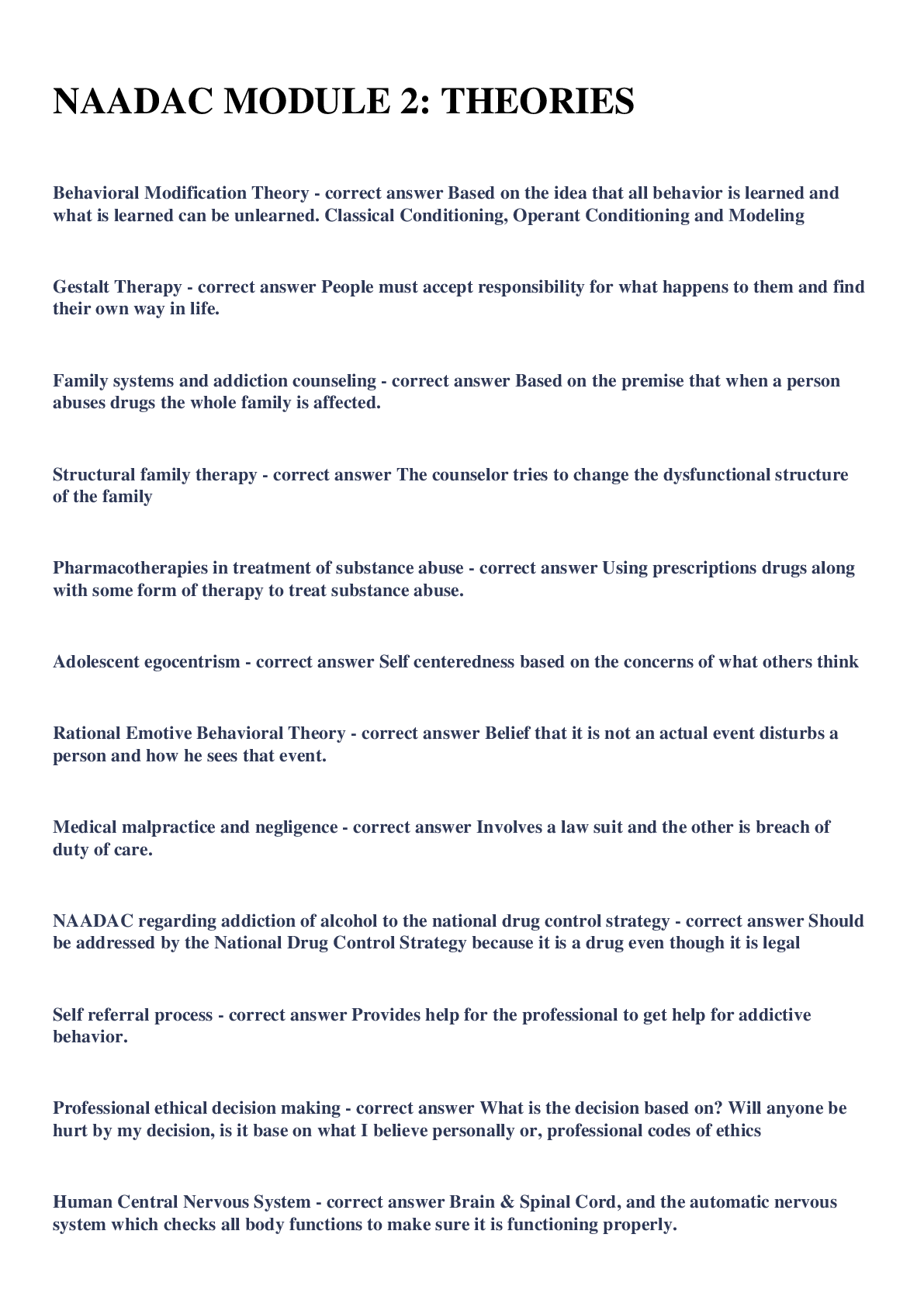
Buy this document to get the full access instantly
Instant Download Access after purchase
Buy NowInstant download
We Accept:

Reviews( 0 )
$13.00
Can't find what you want? Try our AI powered Search
Document information
Connected school, study & course
About the document
Uploaded On
Aug 18, 2023
Number of pages
34
Written in
Additional information
This document has been written for:
Uploaded
Aug 18, 2023
Downloads
0
Views
103


